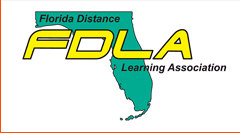Stepping up to the challenges of COVID-19 and Pre-k through 12 education
Start
9-30-2020 10:00 AM
End
9-30-2020 11:00 AM
Short Description
Theoretical Framework
The rapid evolution of digital tools, propelled by technology and human creativity, will require that as tools appear and evolve, we are able to assess their worth for multimodal communication value. (In the paper, discuss Vygotsky and the importance of human communication, as well as Eisenberg, Bronfenbrenner to address implications on individual development). Therefore, since assessment is critical for technology integration, this paper will discuss technology assessment models.
Digital Tools
Disruptive Technologies Prevalence of Mobile Technologies: iPad, tablets, and iPhone
Tablet-based learning: mathematics, creative writing, etc.
Student created group videos
Abstract
COVID – 19 drove schools to close and push all classes to an online format without enough time to plan and design effective online classes (Shapiro 2020). Though many schools are planning to reopen, the continuing threat of COVID-19 may change those plans (Shapiro 2020). Furthermore. COVID-19 forced many to teach online without the proper preparation, those schools and institutions now see the need to prepare and produce robust online or blended learning utilizing robust tools. As we move forward, those schools and institutions that pour their resources and talent into creating robust online learning experiences will succeed (Horn 2020). We argue this must include the use of effective digital tools that create productive multimodal communication environments. The prevalence of Mobile Technologies: iPad, tablets, and iPhones are changing how we function and force us to evaluate and incorporate proper digital tools into our classrooms. This article will discuss technology tools that can be utilized to enhance multimodal communication environments. Technologies that have unclear applications for educational purposes are considered disruptive technologies (Vasinda et al. 2017). These disruptive technologies may prove to change the way society communicates as we move forward into what may be a pandemic future. Some of the disruptive technologies that will be discussed are not limited to but include student-created group videos: digital storytelling, voice-based response systems, and more. Issues of equity are addressed as well as factors indicative of equitable distribution, accessibility, and connectivity among students in culturally diverse and economically challenged communities (Darling- Hammond 1998; Thaler 2012). The rapid evolution of digital tools, propelled by technology and human creativity, will require that as tools appear and evolve, we are able to assess their worth for multimodal communication value. (In the paper, discuss Vygotsky and the importance of human communication, as well as Eisenberg, Bronfenbrenner to address implications on individual development). Therefore, since assessment is critical for technology integration, this paper will discuss technology assessment models.
Format
Snapshot Presentation
Institutional level targeted
Other
Stepping up to the challenges of COVID-19 and Pre-k through 12 education
COVID – 19 drove schools to close and push all classes to an online format without enough time to plan and design effective online classes (Shapiro 2020). Though many schools are planning to reopen, the continuing threat of COVID-19 may change those plans (Shapiro 2020). Furthermore. COVID-19 forced many to teach online without the proper preparation, those schools and institutions now see the need to prepare and produce robust online or blended learning utilizing robust tools. As we move forward, those schools and institutions that pour their resources and talent into creating robust online learning experiences will succeed (Horn 2020). We argue this must include the use of effective digital tools that create productive multimodal communication environments. The prevalence of Mobile Technologies: iPad, tablets, and iPhones are changing how we function and force us to evaluate and incorporate proper digital tools into our classrooms. This article will discuss technology tools that can be utilized to enhance multimodal communication environments. Technologies that have unclear applications for educational purposes are considered disruptive technologies (Vasinda et al. 2017). These disruptive technologies may prove to change the way society communicates as we move forward into what may be a pandemic future. Some of the disruptive technologies that will be discussed are not limited to but include student-created group videos: digital storytelling, voice-based response systems, and more. Issues of equity are addressed as well as factors indicative of equitable distribution, accessibility, and connectivity among students in culturally diverse and economically challenged communities (Darling- Hammond 1998; Thaler 2012). The rapid evolution of digital tools, propelled by technology and human creativity, will require that as tools appear and evolve, we are able to assess their worth for multimodal communication value. (In the paper, discuss Vygotsky and the importance of human communication, as well as Eisenberg, Bronfenbrenner to address implications on individual development). Therefore, since assessment is critical for technology integration, this paper will discuss technology assessment models.

